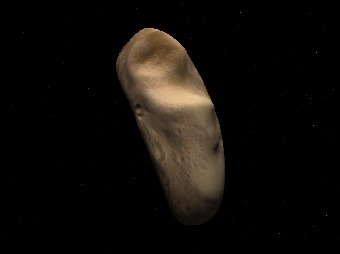BY LETTER
Silicaceous Type Asteroid
Silicaceous Asteroids have high albedoes (from 15% to 25%) are slightly red in colour and contain moderate amounts of metallic elements. Silicaceous asteroids are mainly metallic iron and magnesium-silicates in composition. Quite common, these bodies are often mined for metals, oxygen and silicon; refineries and other bases are common, with corundumoid among many significant exports. Silicate minerals are also in demand for radiation shielding and mass anchors, as a component of artificial soils and for landscaping inside rotating habitats.
Many times these are fragments from larger bodies, even to the point of being little more than piles of "rubble", loose aggregates of material that have been drawn back together by gravity after the initial object was broken up. This can make mining somewhat easier, but rubble piles are tricky to manipulate when it is necessary to divert their orbit for various reasons. Asteroids that consist of a large, single mass can be hollowed out to form a habitable cavern, but this is a relatively rare occurrence.
As a solar system forms, a population of asteroids might form close enough to the young and active sun so that they become differentiated bodies. These Silicaceous asteroids are heated sufficiently by the electromagnetic currents so that minerals will become separated, much like the process experienced by larger worlds due to their internal heating. As the sun begins to stabilize and cool down, what is left is a rocky body that typically has an olivine crust surrounding a nickel-iron alloy core; a fully differentiated asteroid may become a member of the Vesta- or V-subtype.
Related Articles
Appears in Topics
Development Notes
Text by John M. Dollan and M. Alan Kazlev
Initially published on 24 September 2001.
Initially published on 24 September 2001.







